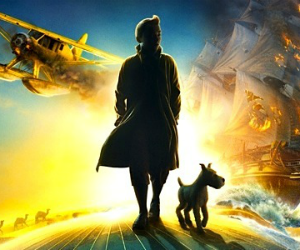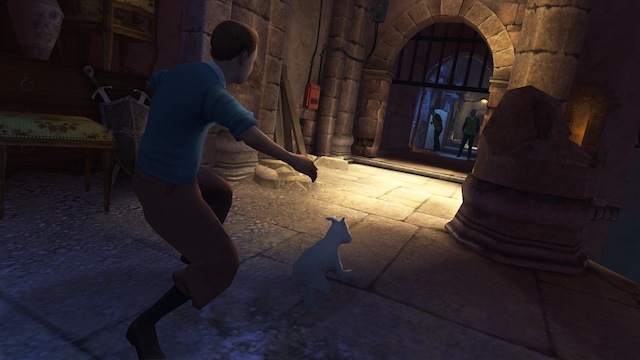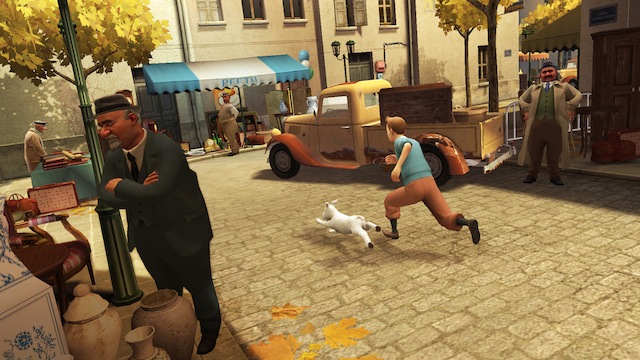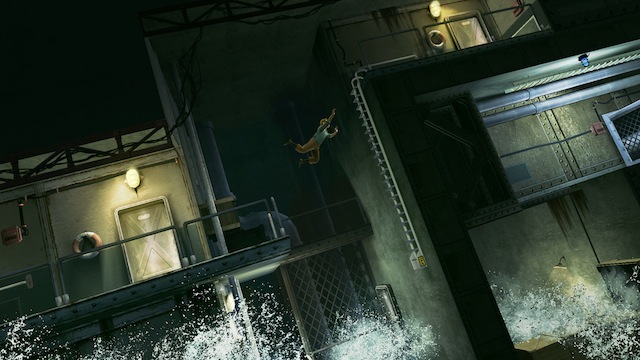The Adventures of Tintin: The Secret of the Unicorn Review
 Game: The Adventures of Tintin: The Secret of the Unicorn
Game: The Adventures of Tintin: The Secret of the Unicorn
Developer: Ubisoft Montpellier
Publisher: Ubisoft
Available on: Xbox 360, PlayStation 3, Nintendo Wii, Nintendo 3DS, Nintendo DS, PC and iOS (Reviewed on PlayStation 3)
With the brand new animated film (directed by the legend Steven Spielberg himself) currently in the cinemas we were bound to be getting a videogame based on it. The Adventures of Tintin: The Secret of the Unicorn is, for the most part at least, a 2D platforming game from the guys over at Ubisoft Montpellier, just the people who you want making a game based on the French speaking journalist and reporter.
Is the game worth playing though? Or is it just another film tie-in that places itself with all of the other disappointing film based videogames that are out there?
STORY: The storyline within the game follows the story of the film of the same name, so if you’ve already been and seen it then you’ll know what you’re going to be getting. That doesn’t take anything away from the story however, and people that have yet to see the film will be getting a story full of mystery, intrigue and tricky situations. The story starts as Tintin is purchasing a nice looking model ship from a street vendor but, in true Tintin fashion, even something as relatively simple as buying a model isn’t always as easy as it first appears. Before long he’s got himself, and his trusty canine sidekick Snowy, up to his neck in trouble. But for an investigative journalist as intelligent and capable as Tintin, trouble means adventure and the chance to get a good story!

The story often shifts in its style, changing to suit whichever gameplay elements are in use at any particular moment in time, and despite all of the moving around within the basic framework of a story, players will never find themselves confused as to what they’re doing; why they’re doing certain things is another story altogether.
GRAPHICS: If you’re a fan of Herge’s artwork then there’s a good chance that you’re going to enjoy the visuals in The Adventures of Tintin: The Secret of the Unicorn, both the film and in the game. The design of the film version of the characters are faithfully recreated within the game world, complete with the bulbous nose of Archibald Haddock and bowler hats and moustaches of Thompson and Thompson. If you’re familiar with Tintin’s world then you’re going to feel right at home here.
The visuals look great, but from all the trailers and screenshots we saw in the run up to the game’s release, we really had no reason to doubt this. The only downside is that the graphics looks at their peak during the 2D platforming sections, however, the game insists on a regular basis that you play it in all types of other modes. 3D platforming, puzzle solving, driving, all sorts. While these aren’t necessarily a bad thing it makes the overall polish of the game less impressive when more time was clearly spent on the 2D sections and very little of it spent elsewhere. This is extremely disappointing considering how amazing a lot of the main areas look, especially during the Karaboudjan (the ship where Tintin first meets Captain Haddock) sections.

SOUND: The sound in The Adventures of Tintin: The Secret of the Unicorn is top notch. All of the characters that appear sound as they do in the film and all of them come across very well. Even the minor characters that players may only see once or twice throughout the whole course of the game are acted well and help to ensure a sense of immersion within the game that will keep people playing.
All of the music is also performed very well, some of the music that’s associated with the Tintin franchise, both from the cartoon of the 80s and 90s and the brand new film, has a connection with certain types of music, as well as individual pieces of music. This comes across in the game and all of the music that you’ll hear will sound impressive and well performed. The music even reacts to certain things that happen while playing – if Tintin gets spotted, gets knocked out or even knocks out another person, the music will play a little flutter to let the player know; a nice touch.
GAMEPLAY: If you’ve seen any of the screenshots and trailers that we’ve posted over the last couple of months here at GodisaGeek.com then you’ll probably be expecting a simple little 2D platforming game when you put fire up The Adventures of Tintin: The Secret of the Unicorn for the first time, I know that’s what I was looking forward to anyway. While you do get mostly that, there are also huge sections which involve piloting planes, as well as various 3D sections which just involve a lot of walking around. These parts are really disappointing as the 2D sections are the best part of the game, they’re fun, challenging and extremely addictive. Every time the game switches to one of the other styles there’s a chance of removing the player from the immersion of the game; this happened with me more than a few times.
If you get a little fed up with the single player mode with all the style changes, and you’ve got a friend with you (there’s only local multiplayer, no online), then you’ll be able to jump into the Tintin and Haddock mode which allows the player to play through various levels which are comprised of the strange dreams of the Captain himself. Players will choose whether they want to play as the Captain or Tintin and simply get to the end of the level. This mode is all 2D platforming so it’s good for the people that love that style of the game, however, there’s no real story to this mode so there’s nothing to keep people coming back for more and completing it, other than the chance to earn more coins in order to unlock new costumes. This mode is playable by one person but it’s much more fun in co-op; as most things are.

On top of the game’s main mode, and then the Tintin and Haddock mode, there’s also the challenge mode which gives the player a chance to work through either the plane piloting, Francis Haddock’s sword fighting or the driving sections of the game in order to earn better and better medals. While the addition of this mode is nice to have, for the people that enjoy those sections of the game, they’re all the weaker areas so having more of them to play isn’t really an exciting proposition. For the people that like to 100% complete a game though it adds a little bit more value for money.
Again, for the people that enjoy collecting every single thing they possibly can within a game, there is the opportunity to collect golden crabs from each of the levels in order to unlock collectible items. These mostly consist of concept art and character profiles, as well as a few other things, but there’s nothing particularly special about them. It gives people an excuse to go back and replay some of the levels though, trying to get all of the golden crabs within a level. Again, it’s something for the people that like to totally finish a game before they move on, and the collectors amongst you, but nobody can really complain about having extra things to do.
LONGEVITY: Unfortunately the main game isn’t very long at all, lasting about 5 to 6 hours. If you’re the type of player who enjoys looking through every single nook and cranny available then you will be happy about the fact that you can collect the golden crabs, unlocking bonus artwork and character bios. This alone extends the life of the game significantly, once you add the Tintin and Haddock section as well as the challenges mode, you’re looking at a fairly substantial game of a decent length. It’s just a shame that more of that isn’t in the single player area of the game, the part where most people are going to be wanting to spend their time.
VERDICT: The Adventures of Tintin: The Secret of the Unicorn is an impressive game and as far as film tie-in games go it’s one of the better ones out there, but there are certain things that hold it back from being anything more than just another tie-in. If the game was a simple 2D platformer without all of the game style changes, it would have been a much more impressive game. As it stands, the changes in style (something which in theory should have helped the game flow by keeping things interesting) just serves to take a player, who may have been immersed in the story and gameplay, out of the game and back to the real world. Not something that you really want happening.





